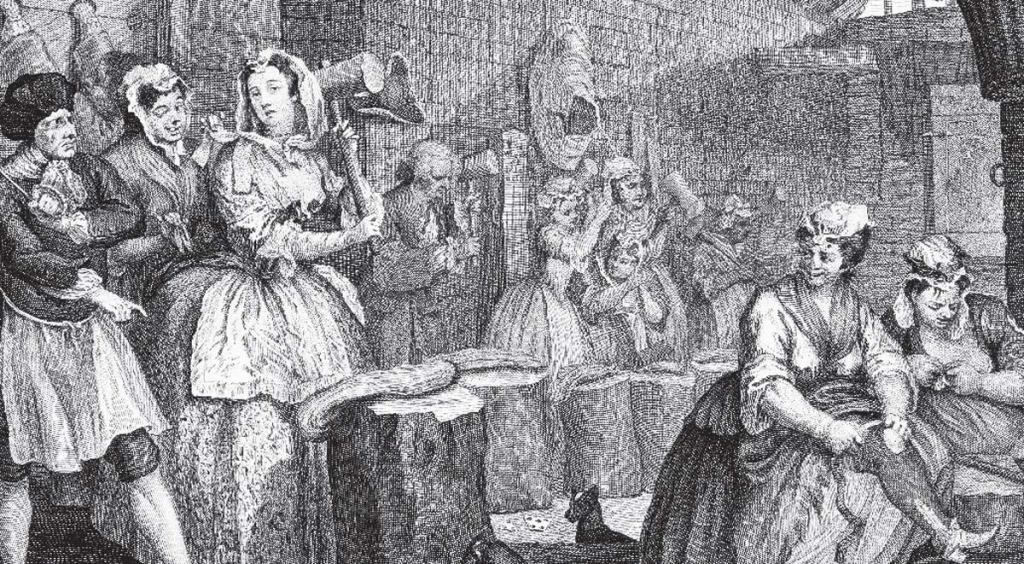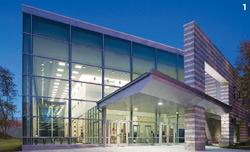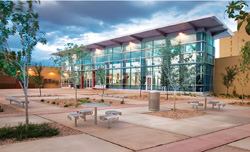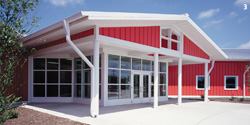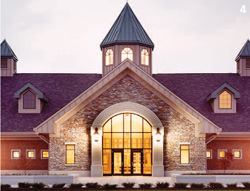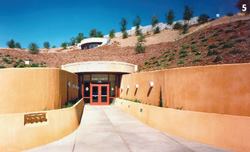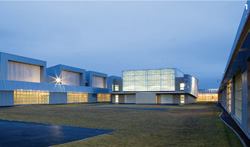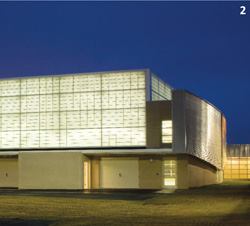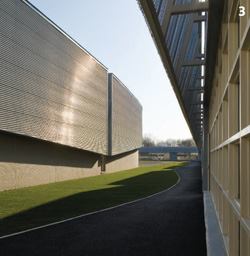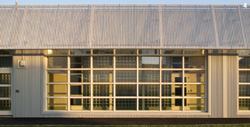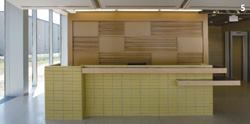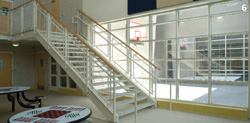DIRECT SUPERVISION AND NORMATIVE DESIGN The switch to a pod orientation in jails and prisons is not just aesthetic. Increasingly, correctional facilities are moving away from the remote supervision of inmates from separated control rooms or guard towers. This remote-supervision model was inspired, in part, by English theorist Jeremy Bentham and his panopticon (Greek for “all-seeing”). On Bentham’s design, guards could observe inmates from a tower or cell without direct interaction. A modified panoptic design was used at the Twin Towers Correctional Facility in Los Angeles, which opened in 1997.
Today, however, a direct-supervision model, which places the officer in housing cells with the detainees, is becoming more popular. Direct-supervision facilities look to create a normative environment, in which the surroundings uphold healthy social norms. The model springs from a belief that the design impacts the inmate’s frame of mind and that, by offering as “normal” an interior as possible, you can mitigate violence and aid rehabilitation.
Jonathan Hillyer/HOK
Gwinnett County Detention Center Renovation and Expansion, Lawre…
Gone are the harsh steel chairs bolted to the floor. Gone are the dark rooms encased with bars. In their place are dayrooms designed to harness natural light and common areas outfitted with movable furnishings, carpeted flooring, and advanced double-glazed security glass without bars. Natural materials like wood are used when possible, and great care is given to acoustic levels. “When you reduce the decibel level, people’s adrenaline level goes down, including the staff,” Ricci says.
Guards sit in the center of the unit and circulate through the space, which allows them to better interact with the population and help subdue conflict. When inmates act out, their privileges are revoked and they are removed to a more secure section of the building.
“Direct supervision is probably the greatest leap forward we’ve had in a long time,” says Jenny Hutchinson, the jails division chief at the National Institute of Corrections, an organization that frequently partners with architects on research, advocacy, and training. “It combines an architectural design with a philosophy of managing inmates. When it’s done correctly, it can eliminate problems that we have considered inherent in jails, like violence and vandalism.”
She adds: “In a traditional jail, we inadvertently created a lot of bad behavior. We expected the worst of those inmates and we conveyed that by the way we interacted with them through the fixtures, the furnishings, and the design of the physical plant.”
Cupples, of DMJM H&N, thinks the direct-supervision facilities he designs have a positive impact. “I’ve always had this belief that what we do as architects is an art and a science, but also a social science, and that what we do can influence behavior.” In the case of his firm’s award-winning, $29 million expansion of Pima County Justice Facility, a jail in Tucson, Ariz., the client wanted a safe, normative environment to reduce violence and support inmate release back into the community. The architects began by breaking down a large, 64-bed dormitory into eight, eight-person mini-dorms. This allows the inmates some level of privacy and greatly reduces noise within their housing areas. Inmates have access to dayrooms and outdoor recreation. Pima also added high-tech components, such as video visitation (another burgeoning trend in justice design), which allows families to visit during extended hours since staff do not have to physically move them to a visitation room.
Normative, direct-supervision designs are also being applied to juvenile detention centers. Ricci Greene Associates specializes in direct-supervision designs. The firm recently completed the Union County Juvenile Detention Center in New Jersey, a 70,000-square-foot building surrounding nearly an acre of outdoor space. Each housing unit centers around a dayroom with lots of glass and views to the outdoors, and every unit has its own recreation area. There is a full-scale gym as well as classrooms and resource centers.
So far, anecdotal evidence shows that direct supervision does better the environment for both inmates and staff. Before joining the National Institute of Corrections, Jenny Hutchinson spent seven years in the jail system as a correctional officer. She witnessed the transformation from remote to direct supervision firsthand. “I felt much safer,” she says. “I felt much more productive. I enjoyed working with inmates and felt as if I could use higher-level skills.” This is backed up by statistics being collected at the Pima facility. Arizona corrections chief Martha Cramer was so impressed that she wrote an article for Corrections Forum magazine extolling the jail’s design and how it has reduced violent behavior and greatly improved the conditions for staff.
The cost to build direct supervision is not necessarily more than remote supervision, according to the NIC. Either way, it’s a lot: According to the Pew Charitable Trust, states spend more than $40 billion a year on corrections.
